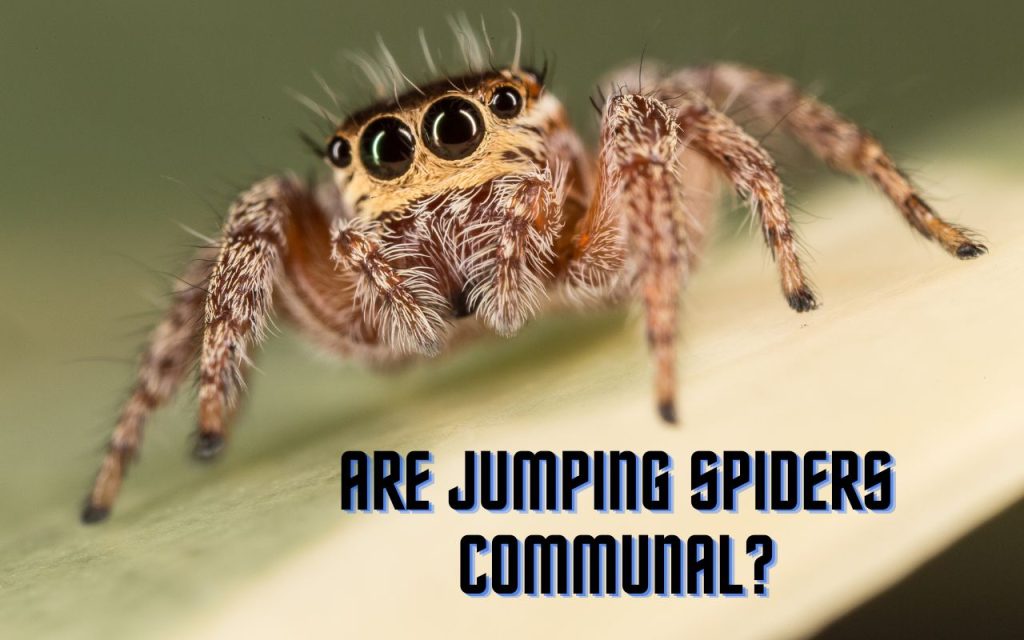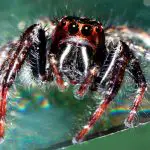As an avid hobbyist with a deep fascination for the world of arachnids, I’ve spent countless hours observing, researching, and documenting these intricate creatures. Today, I’d like to focus on a particularly charming and athletic group – jumping spiders. Many people have asked me this intriguing question: are jumping spiders communal? Let’s dive into the topic and unravel the mystery behind these fascinating creatures.
Jumping spiders, part of the Salticidae family, are known for their incredible leaping ability and strikingly detailed vision. There are more than 5,000 described species of jumping spiders across the globe, displaying a stunning variety of behaviors and characteristics.
What are communal spiders?
The big question for today is whether these spiders live in harmony together, making them communal, or whether they prefer a more solitary lifestyle. Before we delve into this, it’s crucial to understand what ‘communal’ truly means in the arachnid world.
Communal behavior in spiders is typically defined as spiders of the same species living together, often sharing webs or burrows. This behavior includes cooperative hunting and breeding, along with sharing food and childcare responsibilities.
It is not common among many spider species due to the risk of cannibalism, but some do exhibit this intriguing social structure. That said, the vast majority of communal species discovered so far are web-building spiders, unlike Jumping Spiders which are often defined as ‘cursorial’ (which means that they tend to run a lot).
Are Jumping Spiders Communal?
In essence, most jumping spiders are not communal. They tend to be solitary creatures that prefer their own company to that of their kin. But like any rule in nature, there are exceptions.
Three species, albeit very poorly understood ones, are known to be communal in the wild. They are Menemerus, Pseudicius sp. 1, and Pseudicius 2. What makes these species all the more bizarre is that they tolerate members of their own species, but also other species.
In fact, they go as far as to build their communal nests within the communal webs of other species! As you might expect, this has intrigued a great many scientists, and studies on them are ongoing.
Out of the species we often keep as pets, Phidippus regius, the Regal Jumping Spider, has been observed showing semi-communal behavior under certain circumstances.
In captivity, some hobbyists and scientists have reported that juveniles of this species can cohabitate peacefully, at least for a time. However, as they grow older, they tend to become more territorial and aggressive, displaying a shift towards solitary behavior.
*Note: I wouldn’t try putting mine together at any age – except for breeding!
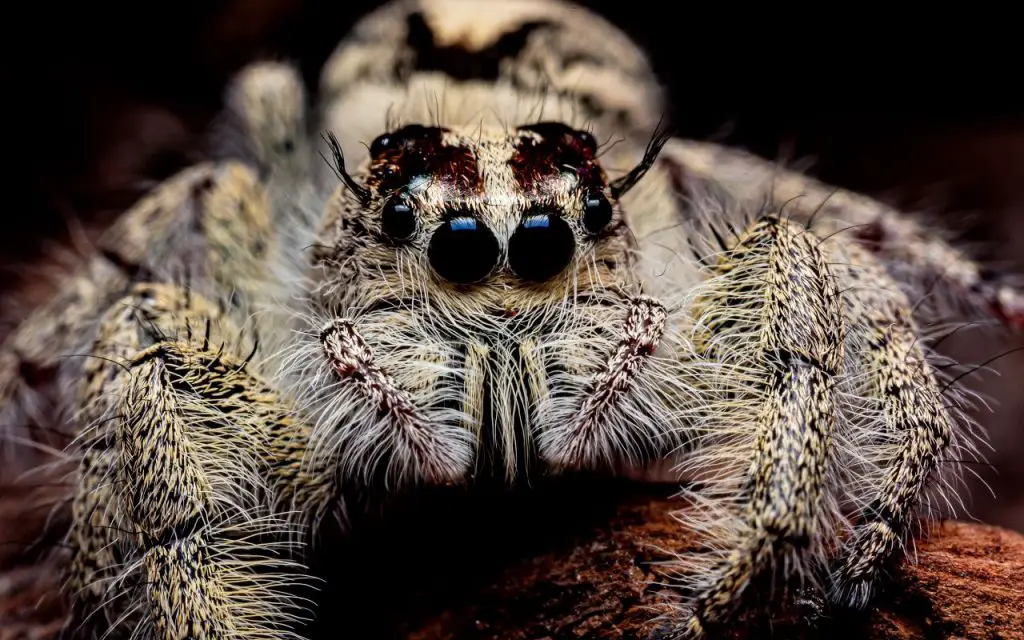
Factors Influencing Communal Behavior
Various factors can influence the communal tendencies in spiders. Here are a few:
- Food Availability: If food resources are plentiful, spiders are less likely to compete and more likely to coexist.
- Habitat: A suitable environment with ample hiding and hunting spots can promote peaceful coexistence.
- Predation Pressure: High predation pressure can force spiders to band together for survival.
- Population Density: If the spider population in a certain area is too dense, it can lead to increased cannibalism and less communal behavior.
Now, let’s take a look at a table comparing the communal and solitary behavior traits among common jumping spider species.
| Jumping Spider Species | Communal Behavior | Solitary Behavior |
|---|---|---|
| Phidippus regius | Semi-communal (primarily in juveniles) | Yes (especially in adults) |
| Salticus scenicus | No | Yes |
| Habronattus pyrrithrix | No | Yes |
| Maratus volans | No | Yes – but elaborate courtships |
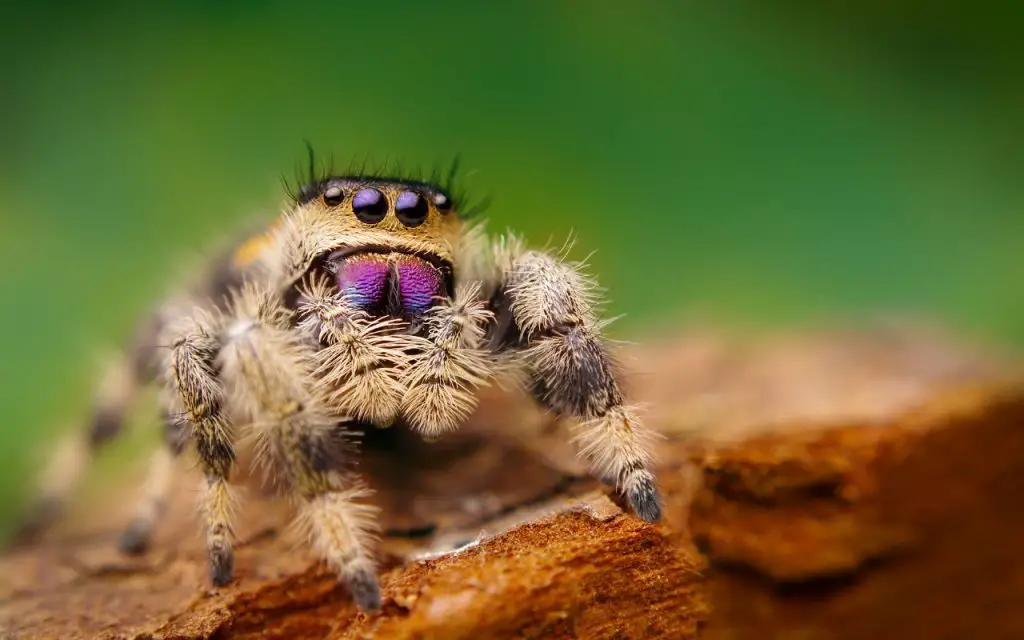
Are There Advantages to Being Solitary?
Despite the seeming benefits of communal living, there are definite advantages to the solitary lifestyle adopted by most jumping spiders.
Solitary spiders don’t have to share food resources, face fewer threats from their own kind, and have a broader range of habitats available to them. They also avoid conflicts and potential cannibalistic encounters that might arise in a communal setting.
Are Jumping Spiders communal? Final Thoughts…
So, while there are a few exceptions, the answer to our initial question is largely, no – jumping spiders are not communal. They are fascinating, complex creatures that exhibit a wide range of behaviors, but communal living is not a common part of their repertoire.
Whether leaping towards prey with unerring accuracy or displaying their vibrant colors in intricate mating dances, jumping spiders continue to captivate and astound me with their solitary prowess. This hobby of studying arachnids, far from being creepy or strange, opens a door to understanding a different, complex side of the natural world.
As I continue to delve into the world of arachnids, each discovery leads to new questions, new mysteries to be unraveled, and a greater appreciation for these tiny, often misunderstood creatures. So, the next time you spot a jumping spider in your home or garden, take a moment to appreciate its solitary, intricate life, and the remarkable evolutionary journey that has brought it into your world.
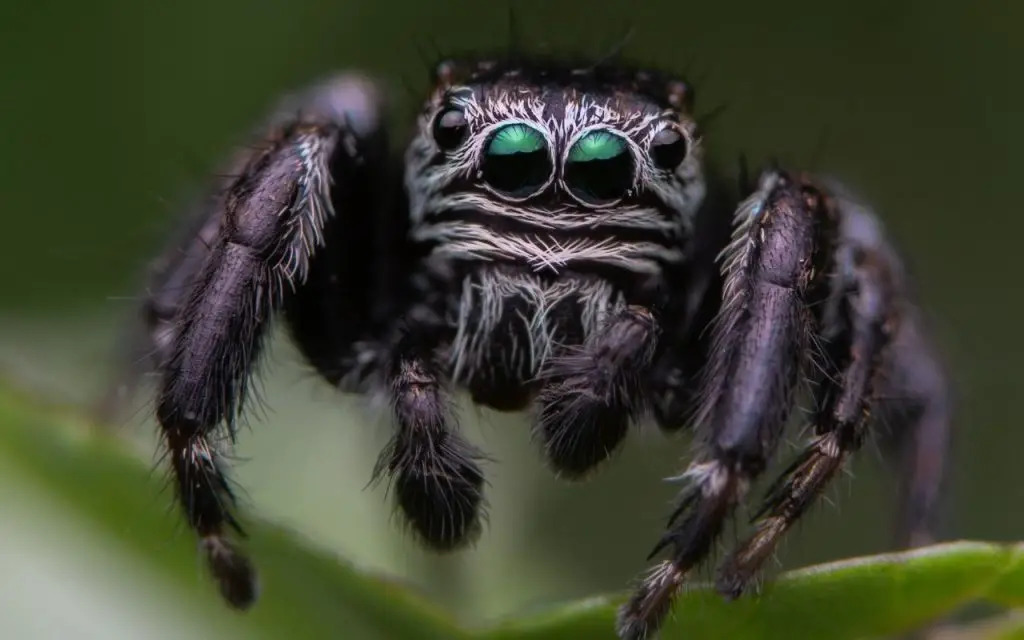
FAQ relating to communal living in the Salticidae family:
Can jumping spiders be housed together?
Jumping Spiders cannot be housed together. There are very few communal species of Jumping Spiders, and these are not found in captivity. As a general rule, the common pet jumpers like the Bold Jumper, Green Jumper, and Regal Jumper should be considered potentially cannibalistic.
Do jumping spiders live in groups?
Most Jumping Spiders do not live in groups, and will eat each other if given the chance. In fact, some species even specialise in eating other spiders. Jumping Spiders in the Portia genus, like the White Moustached Jumping Spider, are so good at being cannibals that they regularly hunt and eat other jumpers.
Do jumping spiders have family?
Jumping spiders do not really have a concept of family. They do show some parental care, however. A female will take care of her egg sac, and guard it from predators until the spiderlings hatch. Most species will also stay nearby and guard the babies until their first molt, after which they will leave home and go hunting.
Do jumping spiders stay in one area?
Most jumpers do stay in one area, especially if it’s a great hunting spot such as a wall that gets a lot of bugs on it. You can test this yourself: Find a wall outside your house with a jumping spider on it, and go back the next day. Often, you’ll notice that the same spider is somewhere on that wall, day-after-day.

